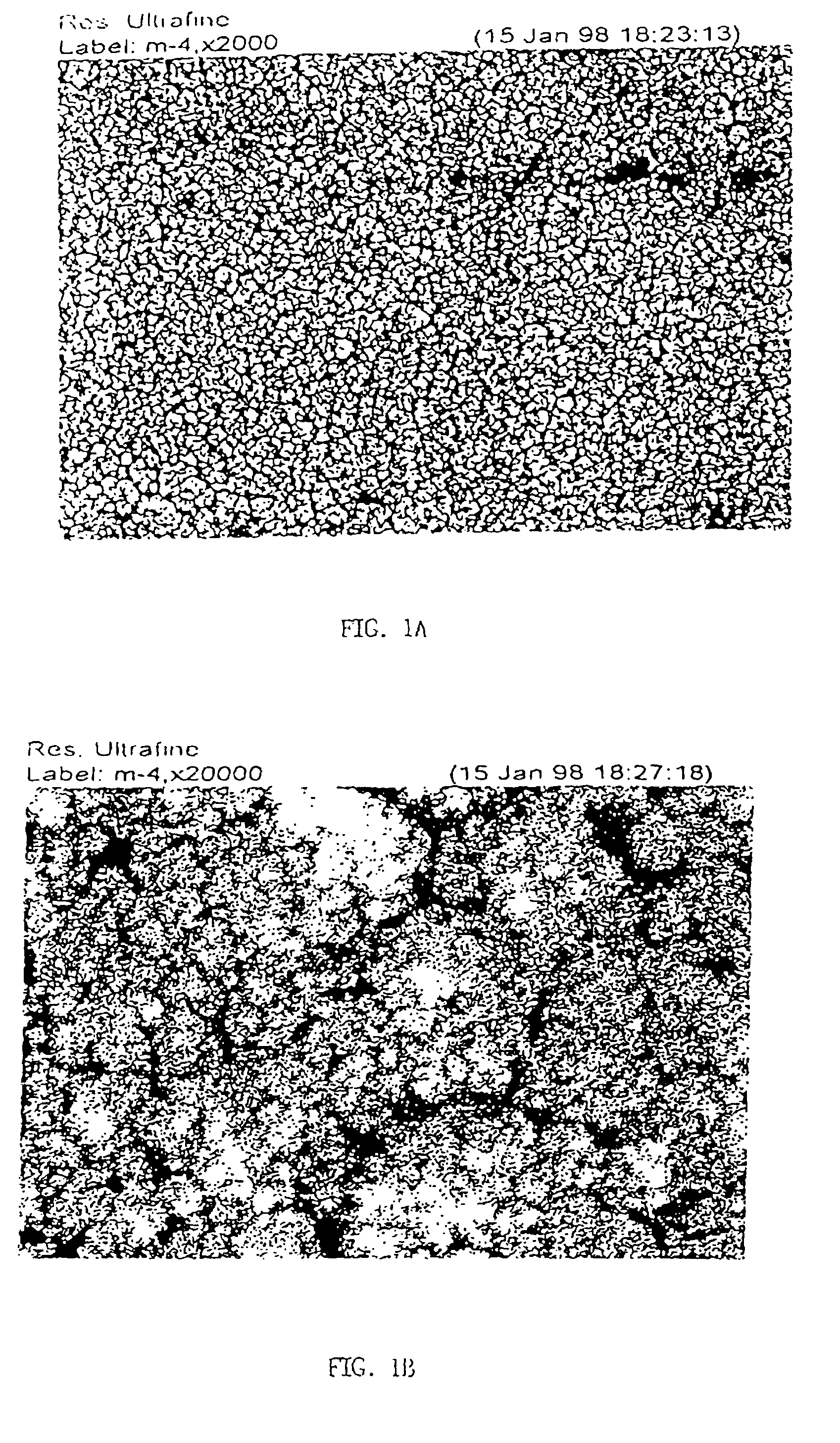Method for producing high surface area foil electrodes
a foil electrode and high surface area technology, applied in the direction of electrolytic capacitors, transportation and packaging, natural mineral layered products, etc., can solve the problems of mechanical weakening of foils, difficult to fabricate electrolytic capacitors by high speed winding, and additional cost of working with two metals
- Summary
- Abstract
- Description
- Claims
- Application Information
AI Technical Summary
Benefits of technology
Problems solved by technology
Method used
Image
Examples
example 2
Deposition of Discontinuous Aluminum Oxide Layer
Aluminum foils with fractal-like surfaces were prepared as in Example 1, except that the foils were heated as described above during the evaporation of the aluminum to promote the formation of coarser surface structures. On each foil, a discontinuous layer of aluminum oxide, 500 .ANG. to 2000 .ANG. thick, was deposited by thermal resistive evaporation of aluminum in a pure oxygen atmosphere, at oxygen pressures of between 0.0015 torr and 0.007 torr. This deposition was effected in the same chamber as that in which the foil was prepared, to avoid uncontrolled oxidation in ambient air. Layer thicknesses were measured as described by Mattox on page 569. Simple electrical resistance measurements transverse to the foils using dry probe electrodes showed that the foils had negligible resistance to the transverse flow of electricity (short circuit), showing that the aluminum oxide layers were indeed discontinuous. By contrast, a foil on which...
PUM
| Property | Measurement | Unit |
|---|---|---|
| pressure | aaaaa | aaaaa |
| pressure | aaaaa | aaaaa |
| pressure | aaaaa | aaaaa |
Abstract
Description
Claims
Application Information
 Login to View More
Login to View More - R&D
- Intellectual Property
- Life Sciences
- Materials
- Tech Scout
- Unparalleled Data Quality
- Higher Quality Content
- 60% Fewer Hallucinations
Browse by: Latest US Patents, China's latest patents, Technical Efficacy Thesaurus, Application Domain, Technology Topic, Popular Technical Reports.
© 2025 PatSnap. All rights reserved.Legal|Privacy policy|Modern Slavery Act Transparency Statement|Sitemap|About US| Contact US: help@patsnap.com



